- Home
- H. Rider Haggard
King Solomon's Mines (Barnes & Noble Classics Series) Page 28
King Solomon's Mines (Barnes & Noble Classics Series) Read online
Page 28
3 (p. 110) a black Madame Defarge: A character in Charles Dickens’s A Tale of Two Cities (1859), Madame Defarge sits knitting in her wine shop, consumed with hatred for the French aristocracy, upon whom she wreaks vengeance.
Chapter 11
1 (p. 122) Arthur’s appeal to the ruffians: In act 4, scene 1 of Shakespeare’s King John, the title character conspires with a chamberlain to murder a young prince and sends two ruffians to burn out the boy’s eyes with red-hot irons. Prince Arthur pleads persuasively, and they do not blind him: “Will you put out mine eyes? / These eyes that never did nor never shall / So much as frown on you.” Charles Dickens, in chapter 14 of A Child’s History of England (1851-1853), also addressed the subject:Then, the King took secret counsel with the worst of his nobles how the Prince was to be got rid of. Some said, ‘Put out his eyes and keep him in prison.’... King John, feeling that in any case, whatever was done afterwards, it would be a satisfaction to his mind to have those handsome eyes burnt out that had looked at him so proudly while his own royal eyes were blinking at the stone floor, sent certain ruffians to Falaise to blind the boy with red-hot irons. But Arthur so pathetically entreated them, and shed such piteous tears, and so appealed to HUBERT DE BOURG (or BURGH), the warden of the castle, who had a love for him, and was an honourable, tender man, that Hubert could not bear it. To his eternal honour he prevented the torture from being performed, and, at his own risk, sent the savages away.
Chapter 12
1 (p. 128) “Dilly, Dilly, come and be killed”: The British nursery song “Oh, what have you got for dinner, Mrs. Bond?” contains the lines:There’s beef in the larder, and ducks in the pond;
Dilly, dilly, dilly, dilly, come to be killed,
For you must be stuffed and my customers filled!
Dylan Thomas memorably used this old song in his “play for voices” Under Milk Wood (1954), in which a loft hawk calls, “dilly dilly, come and be killed.” C. S. Lewis, near the end of his essay “On Obstinacy in Belief,” (reprinted in The World’s Last Night, and Other Essays, New York: Harcourt, 1960) points out the flaws in ungrounded faith: “The ducks who come to the call ‘Dilly, dilly, come and be killed’ have confidence in the farmer’s wife.”
Chapter 13
1 (p. 135) gatling: In 1862, inspired by the American Civil War, the North Carolina-born gun maker Richard Jordan Gatling (1818-1903) patented a mechanical gun with multiple barrels on a revolving frame that could fire hundreds of rounds per minute. By 1882 a newer model could fire up to 1,200 rounds per minute. The Gatling gun plays a role in Mark Twain’s A Connecticut Yankee in King Arthur’s Court (1889), in which the narrator Hank Morgan invents his own Gatling gun, which shoots out money.
Chapter 14
1 (p. 145) the three Romans: The allusion is to legendary heroes of ancient Rome. According to the historian Livy, Horatius Cocles (“Horatio the one-eyed”) and two companions defended the Sublician bridge against an army of Etruscans led by Lars Porsena, while the Roman army hastily destroyed the bridge. Having succeeded, Horatius jumped into the River Tiber and swam to shore safely: Tum Cocles Tiberine pater inquit te sancte precor haec arma et hunc militem propitio flumine accipias (“Then Cocles shouted, ‘Father Tiber, I respectfully beg you to receive these arms and this soldier in a benevolent flood’ ”) (Livy, History of Rome, 2:10). Thomas Macaulay, in his Lays of Ancient Rome (1842), translated the same words in quatrain form, in stanza 59 of “Horatius: A Lay Made about the Year of the City CCCLX”:“Oh, Tiber! father Tiber!
To whom the Romans pray,
A Roman’s life, a Roman’s arms,
Take thou in charge this day!”
2 (p. 149) as I think the “Ingoldsby Legends” beautifully puts it: In fact, the lines are from canto 6, stanza 34 of the long poem Marmion: A Tale of Flodden Field (1808), by Sir Walter Scott:The stubborn spearmen still made good
Their dark impenetrable wood,
Each stepping where his comrade stood,
The instant that he fell.
The historical battle of Flodden (1513), which pitted Scotland against England, was won by England with heavy losses on both sides. The same canto of Scott’s work contains the famous lines: “O, what a tangled web we weave, / When first we practise to deceive! (Marmion, canto 6, stanza 17). Once again Quatermain refers to his favorite ”Ingoldsby Legends” (see note 2 for chapter 1).
3 (p.152) “fallen from his high estate”: The quotation is from the poem “Alexander’s Feast,” by British poet John Dryden (1631-1700), describing King Darius defeated by Alexander the Great and forsaken by his people:Fallen, fallen, fallen, fallen,
Fallen from his high estate,
And welt’ring in his blood;
Deserted, at his utmost need,
By those his former bounty fed;
On the bare earth expos’d he lies,
With not a friend to close his eyes (lines 77-83).
Chapter 15
1 (p. 160) “Of farewells to the dying/ And mournings for the dead”: From the poem “Resignation,” by American poet Henry Wadsworth Longfellow (1807-1882). The entire quatrain reads:The air is full of farewells to the dying,
And mournings for the dead;
The heart of Rachel, for her children crying,
Will not be comforted! (lines 5-8).
The reference to Rachel is taken from the biblical book of Jeremiah, in which Rachel mourns for her children (Jeremiah 31:15). This indirect biblical allusion fits Haggard’s characterization of Quatermain as knowing only two books, the Bible and The Ingoldsby Legends (see note 2 for chapter 1).
Chapter 16
1 (p. 174) “Lead on, Macduff”: This is a common misquotation of “Lay on, Macduff,” from the last scene of Shakespeare’s Macbeth, when Macbeth and his enemy Macduff are fighting. Macduff gives Macbeth a chance to surrender, but Macbeth refuses: “Lay on, Macduff; / And damned be him that first cries, ‘Hold, enough!”’ (act 5, scene 8). “Lay on” meant to attack.
2 (p. 176) Hamilton Tighe: From “The Legend of Hamilton Tighe” in The Ingoldsby Legends (see note 2 for chapter 1). Tighe was a murdered sailor whose ghost appeared, holding his head in his lap, much to the dismay of his killer, a sailor named Hairy-faced Dick (who “hath a swarthy hue, / Between a gingerbread-nut and a Jew”).
Chapter 17
1 (p. 182) great throne of ivory: King Solomon’s ornate throne is described in the Old Testament (1 Kings 10:18-20 and 2 Chronicles 9:17-20).
2 (p. 182) Martini-Henry ammunition boxes: Martini-Henry breech-loading rifles were used by British soldiers in many Victorian wars and are now avidly collected and reproduced (see www.martinihenry.com and www.users.bigpond.com/digger18/main.htm). Also see Dennis Lewis’s book Martini-Henry .450 Rifles & Carbines (Latham, NY: Excalibur, 1996).
3 (p. 183) Monte Christo: This is the anglicized spelling of the protagonist’s name in Alexandre Dumas’s popular novel The Count of Monte Cristo (1844), in which Edmond Dantès, unjustly imprisoned, is told of treasure left on the Island of Monte Cristo. Dantès eventually escapes prison, locates the treasure, takes the title count of Monte Cristo, and buys a house in the wealthy Paris suburb of Auteuil. From there he focuses on taking revenge against his past abusers.
Chapter 18
1 (p. 188) a fleet of ironclads: In 1822 French general Henri J. Paixhans suggested that the French navy build ironclad ships. In 1859 France launched the first ironclad warship, Gloire. Ironclad warships became more visible during the American Civil War, when in 1862 the battle of Hampton Roads between USS Monitor and CSS Virginia was the first-ever between ironclad vessels. In terms of cost, according to the Web site of the Vicksburg National Military Park (www.nps.gov/vick/visctr/sitebltn/age_iron.htm) the ironclad USS Cairo commissioned in 1862, cost $101,000 to build. The Monitor, also commissioned in 1862, cost $195,000. The “fleet of ironclads” Quatermain mentions could thus easily have cost more than a million dollars in nineteenth-century currency.
2 (p. 193) that hope deferr
ed which maketh the heart sick: From the Old Testament book of Proverbs 13:12: “Hope deferred maketh the heart sick: but when the desire cometh, it is a tree of life” (KJV). In this context “hope deferred” refers to the continuing suspense and difficulties experienced by Quatermain and his friends. The implicit mention of the biblical tree of life from the book of Genesis suggests a lost Eden, like Africa itself.
3 (p. 194) African Styx: In Greek mythology, the Styx River surrounded Hades (Hell); it is mentioned in Homer’s Iliad and Odyssey and much later literature. Haggard’s metaphor of an African Styx is complex, since the river in question will return Quatermain and crew to modern urban civilization, rather than to Hell. However, in the ethos of many Victorian travelers, there are many similarities between the two places.
Chapter 19
1 (p. 198) “Open Sesame”: The phrase is the password that opens a cave of treasures in the story of “Ali Baba and the Forty Thieves” from The Thousand and One Nights. Haggard would have known The Arabian Nights’ Entertainments (the work’s alternate name) in the celebrated Victorian translation (1885-1888) by Sir Richard Burton. In the story, Ali Baba’s brother Kasim forgets the magic words and tries “Open, Barley!” without success, followed by “the names of all manner of grains save sesame.” According to one etymology, the term “Open, Sesame” is inspired by the way sesame seeds pop open easily when ripe.
2 (p. 203) wandered out like Hagar into the desert: In the Old Testament book of Genesis 16:1-16, Hagar is the Egyptian maid of Sarah, the prophet Abraham’s wife. Sarah is sterile and arranges for Hagar to bear her husband a son, Ishmael. Hagar and Ishmael are sent into the wilderness, where they are protected by God. Mention of this biblical story of redemption after wanderings seems fitting near the end of the adventures described in King Solomon’s Mines.
Inspired by King Solomon’s Mines
Lost World and Lost Race Literature
Not only was King Solomon’s Mines (1885) a popular success upon its initial publication in England; it also helped inspire a new genre of writing. Along with its sequel Allan Quatermain (1887) and the mythical She: A History of Adventure (1887), King Solomon’s Mines inaugurated the flowering of what are known as Lost World and Lost Race novels. Haggard himself wrote fourteen Quatermain novels and forty-five other books before his death in 1925.
Lost World and Lost Race novels depict Europeans in conflict with foreign people and unknown, dangerous environments. Nineteenth-century British imperialism whetted the reading public’s appetite for these books, creating curiosity about the exotic nations their country was colonizing. Vividly written accounts set in Africa, India, and other lands real and imagined, Lost World and Lost Race novels range from high-minded critiques of British imperialism to swashbuckling tales. They continue to be read today.
In Haggard’s Nada the Lily (1892), the Zulu hero Umslopogaas lives with a wolf pack. Rudyard Kipling said that this book inspired his two Jungle Books (1894, 1895), which Kipling set in the wilds of India, where he was born. Brought together by a shared interest in the legacy of colonialism, Kipling and Haggard became good friends. Kipling helped Haggard brainstorm plots for When the World Shook (1919) and the posthumously published Allan and the Ice-Gods (1927).
Many Lost World and Lost Race novels are simple adventure stories, but a handful wrestle with the ethical implications of Britain’s exploitation of the native people in the countries it occupied. H. G. Wells turned the tables on British imperialists in The War of the Worlds (1898), which portrays Earth as the victim of uninvited colonization by hostile aliens from Mars. In his novella Heart of Darkness (1902), Joseph Conrad told the story of the sailor Marlow, who made a harrowing journey up the Congo River; Marlow describes in exacting detail the savagery and squalor perpetrated by white explorers who, like Quatermain, try to profit from Africa’s natural riches. In Nostromo (1904), Conrad again depicted the corruption and destruction brought by colonialism; the title character is charged with, and eventually loses his life, protecting the bounty of an Englishman’s silver mines.
Even the creator of Sherlock Holmes was influenced by the craze for Lost World and Lost Race fiction. Sir Arthur Conan Doyle set his The Lost World (1912), the first of his five Professor Challenger stories, on a volcanic plateau. In a hidden Amazon rainforest, George E. Challenger’s expedition uncovers the ultimate lost race—dinosaurs—and soon the creatures threaten his life. Writing about Challenger, Doyle’s second most famous creation, provided the author with a much-needed break from writing the Holmes mysteries.
In America, Edgar Rice Burroughs successfully perpetuated the Haggard legacy with Tarzan of the Apes (1914), the story of a British nobleman orphaned in Africa and raised by wild animals. The plot is reminiscent of Haggard’s work as well as of Kipling’s Jungle Books. In Return of Tarzan (1915), the hero grows tired of the civilized city life to which he has been restored, just as Haggard’s hero does in later installments of the Quatermain saga. Tarzan appears in more than twenty sequels, several of which describe his encounter with the fabled lost city of Opar. In a second adventure series that employs many conventions of the Lost World genre, Burroughs’s character John Carter travels to Mars and throughout outer space.
Science-fiction author Michael Crichton could be called the H. Rider Haggard of today. His Congo (1980) is a Victorian adventure novel in the style of King Solomon’s Mines. In the opening pages, a group of eight explorers searching for the lost city of Zinj are slaughtered by an unknown menace. Crichton traces the journey of the recovery team, who uncover hidden diamonds, angry natives, and unnamable horrors.
Author Alan Moore, another fan of adventure yarns, borrows Haggard’s hero Allan Quatermain, as well as characters from Bram Stoker’s Dracula, H. G. Wells’s The Invisible Man, Jules Verne’s Twenty Thousand Leagues Under the Sea, and other best-sellers of the nineteenth century for his graphic two-volume novel set in the Victorian era, The League of Extraordinary Gentlemen (2000). Quatermain is the leader of a group that tries to stop a villain from firebombing the East End of London. In the end, the villain turns out to be none other than Professor Moriarty—Sherlock Holmes’s nemesis. In the second volume, Moore has Burroughs’s Mars expert John Carter assist his other heroes in an interplanetary conflict straight out of Wells’s The War of the Worlds.
In 2003 London-based travel writer Tahir Shah, an ethnic Afghan, published the entertaining true story of his search for treasure in Africa, In Search of King Solomon’s Mines. Armed with a map bought at a flea market in Jerusalem, Shah hires a superstitious Ethiopian cabdriver as his guide through the capital city of Addis Ababa and its rural surroundings. The resulting rollicking travelogue, a humorous version of Haggard’s adventure tales, provides an interesting rendition of Ethiopian history.
Haggard’s Sequels to King Solomon’s Mines
Allan Quatermain—the first and what some believe to be the best sequel to King Solomon’s Mines—finds its hero mourning the loss of his son Harry. Weary of effete, civilized Britain, Quatermain returns to Africa to get in touch with his primitive self. Accompanied by Sir Henry Curtis, Captain John Good, and the Zulu guide Umslopogaas, Quatermain searches for a mythical race of white Africans. A civil war erupts when the adventurers discover the civilization of Zu-Vendis and its two queens both fall in love with Curtis. After the war Quatermain discovers that an assassin has been dispatched to murder the winning monarch. Adventure ensues as Quatermain rushes across the country to save her.
Over the next forty years, Haggard continued to write sequels to King Solomon’s Mines, which include Maiwa’s Revenge (1888), Allan’s Wife (1889), Marie (1912), Child of Storm (1913), The Holy Flower (1915), The Ivory Child (1916), Finished (1916), The Ancient Allan (1920), She and Allan (1921), Heu-Heu; or, The Monster (1924), The Treasure of the Lake (1926), and Allan and the Ice-Gods (1927).
She: A History of Adventure
Haggard’s fantasy-adventure She has left an impact on literature equal to that of his Quatermain saga.
Psychologist Carl Jung considered the title character—also known as Ayesha or “She-Who-Must-Be-Obeyed” —an archetype of woman that exists in the subconscious of all men. Immortal and all-powerful, Ayesha is also fickle and unforgiving.
The search for inner Africa as described by Haggard fascinated Jung and his mentor Sigmund Freud. She was one of Jung’s favorite books, and he wrote about it throughout his career. In his Interpretation of Dreams (1899), Freud calls She “a strange work, but full of hidden meaning.” Freud found Haggard’s novel therapeutic enough to recommend it to a patient, as he recounts in Interpretation.
She and its three sequels sold almost as well as King Solomon’s Mines and were equally important in the development of Lost World and Lost Race novels. Many authors of fantasy novels took cues from Haggard’s creations, including C. S. Lewis, who wrote “The Mythopoeic Gift of Rider Haggard,” an article addressing the author’s myth-making ability. Lewis’s The Chronicles of Narnia series (1950-1956) draws noticeably on the tales of Haggard, as does The Lord of the Rings (1954-1956), by Lewis’s friend J. R. R. Tolkien.
Hundreds of writers have imitated Haggard over the years, but only French author Pierre Benoit has been openly criticized for thematic similarities. Benoit sued reviewer Henry Magden when the latter claimed that the subterranean Queen Antinea from Benoit’s book L‘Atlantide (1919) too closely resembled the title character of She. Benoit lost the case, although it was never proven that he had even read She before writing L’Atlantide, whose ruthless Antinea labels and preserves her dead lovers in a mysterious metal from Atlantis. L’Atlantide, which was translated into more than fifteen languages, became a classic in its own right and won the Grand Prize of the French Academy.

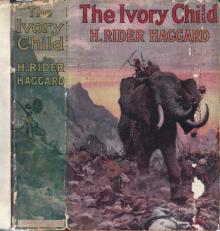 The Ivory Child
The Ivory Child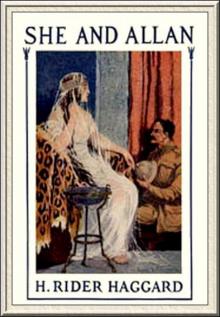 She and Allan
She and Allan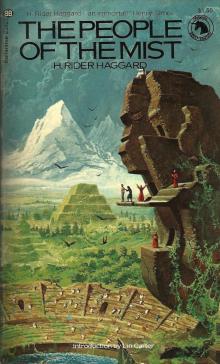 The People of the Mist
The People of the Mist She
She Morning Star
Morning Star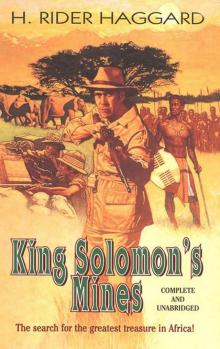 King Solomon's Mines
King Solomon's Mines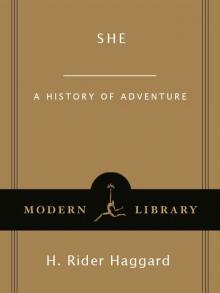 She: A History of Adventure
She: A History of Adventure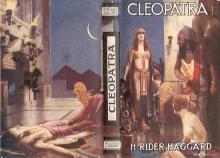 Cleopatra
Cleopatra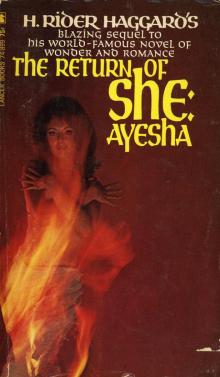 Ayesha, the Return of She
Ayesha, the Return of She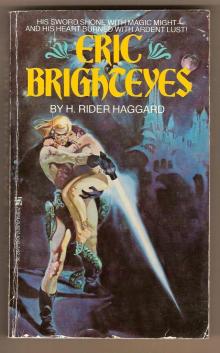 Eric Brighteyes
Eric Brighteyes Red Eve
Red Eve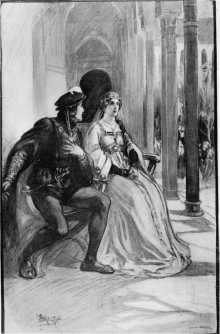 Fair Margaret
Fair Margaret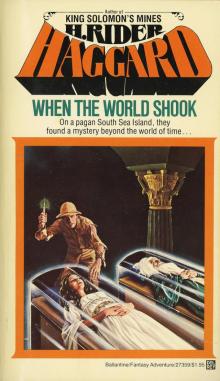 When the World Shook
When the World Shook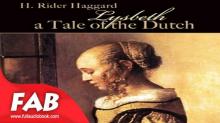 Lysbeth, a Tale of the Dutch
Lysbeth, a Tale of the Dutch Moon of Israel: A Tale of the Exodus
Moon of Israel: A Tale of the Exodus Long Odds
Long Odds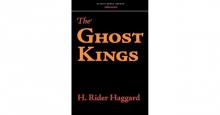 The Ghost Kings
The Ghost Kings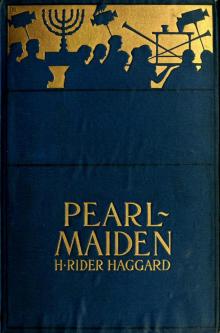 Pearl-Maiden: A Tale of the Fall of Jerusalem
Pearl-Maiden: A Tale of the Fall of Jerusalem Allan and the Holy Flower
Allan and the Holy Flower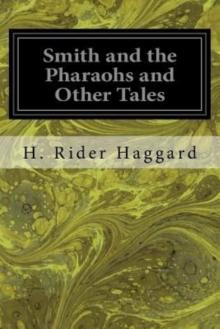 Smith and the Pharaohs, and other Tales
Smith and the Pharaohs, and other Tales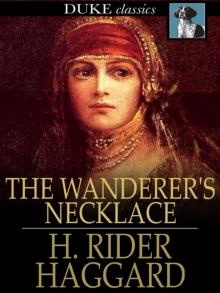 The Wanderer's Necklace
The Wanderer's Necklace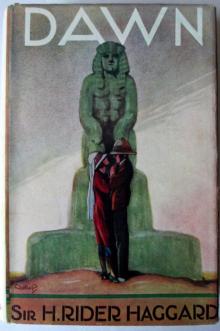 Dawn
Dawn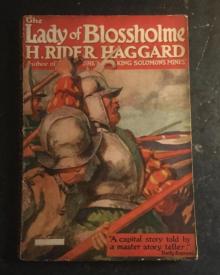 The Lady of Blossholme
The Lady of Blossholme Stella Fregelius: A Tale of Three Destinies
Stella Fregelius: A Tale of Three Destinies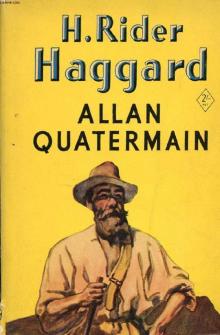 Allan Quatermain
Allan Quatermain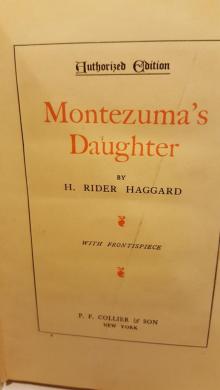 Montezuma's Daughter
Montezuma's Daughter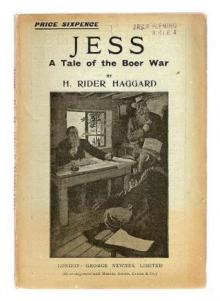 Jess
Jess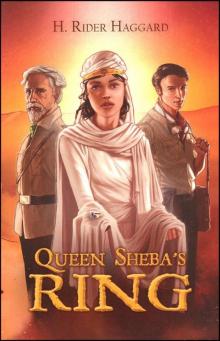 The Brethren
The Brethren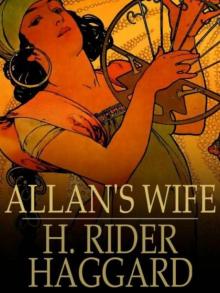 Allan's Wife
Allan's Wife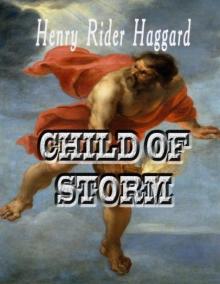 Child of Storm
Child of Storm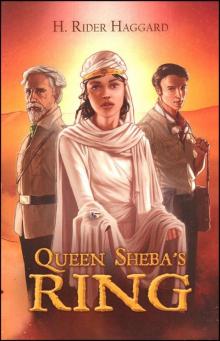 Queen Sheba's Ring
Queen Sheba's Ring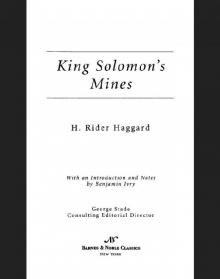 King Solomon's Mines (Barnes & Noble Classics Series)
King Solomon's Mines (Barnes & Noble Classics Series)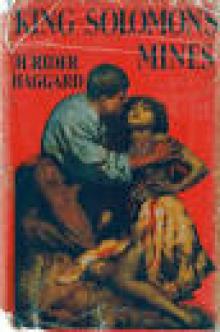 Complete Allan Quatermain Omnibus - Volumes 1 - 10
Complete Allan Quatermain Omnibus - Volumes 1 - 10